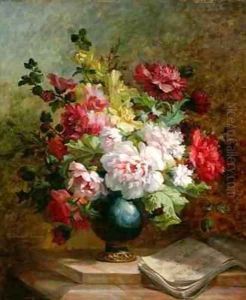Emile Henri Brunner-Lacoste Paintings
Emile Henri Brunner-Lacoste, born in 1877 and deceased in 1945, was an artist whose work and life story are not widely known in mainstream art history. Despite the lack of widespread recognition, Brunner-Lacoste's contributions to the art world during his time were significant, especially in the context of early 20th-century European art movements. His life spanned a period of great change and turmoil, including the turn of the century, two World Wars, and the interwar period, all of which influenced his artistic output.
Brunner-Lacoste was trained in traditional art techniques, but like many of his contemporaries, he was drawn to the innovations that were transforming art in Europe. His early works were characterized by a strong foundation in realism, but as his career progressed, he began experimenting with more avant-garde styles, including elements of Impressionism and Expressionism. These stylistic developments were reflective of the broader shifts occurring in the art world at the time, as artists sought to capture the rapid changes in society and the environment around them.
Throughout his career, Brunner-Lacoste was known to be a prolific painter, though he also dabbled in other mediums, including sculpture and printmaking. His subjects varied widely, from landscapes and urban scenes to portraits and still lifes, showcasing his versatility as an artist. Despite his talent and contribution to the art movements of his time, Brunner-Lacoste did not achieve the same level of fame as some of his contemporaries. This lack of recognition can be attributed to various factors, including the overshadowing presence of more dominant figures in the art world and possibly the eclectic nature of his work, which may have made it difficult for him to be categorized within a specific movement or style.
After his death in 1945, Emile Henri Brunner-Lacoste's work fell into relative obscurity. However, in recent years, there has been a growing interest in rediscovering and reevaluating the contributions of lesser-known artists of his era. Today, Brunner-Lacoste's work is appreciated for its historical value and its role in the development of modern art, with art historians and collectors alike seeking to understand and preserve his artistic legacy.
